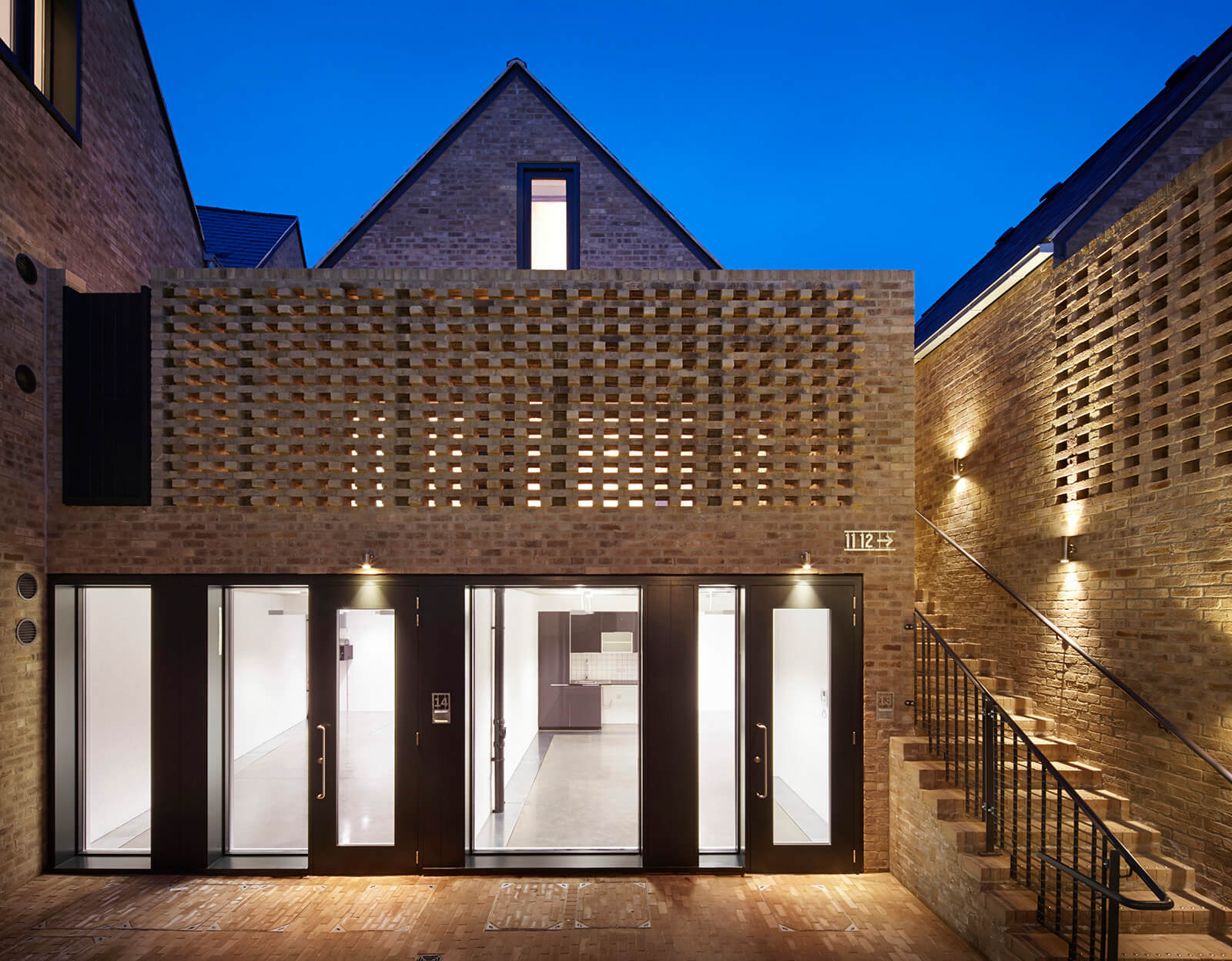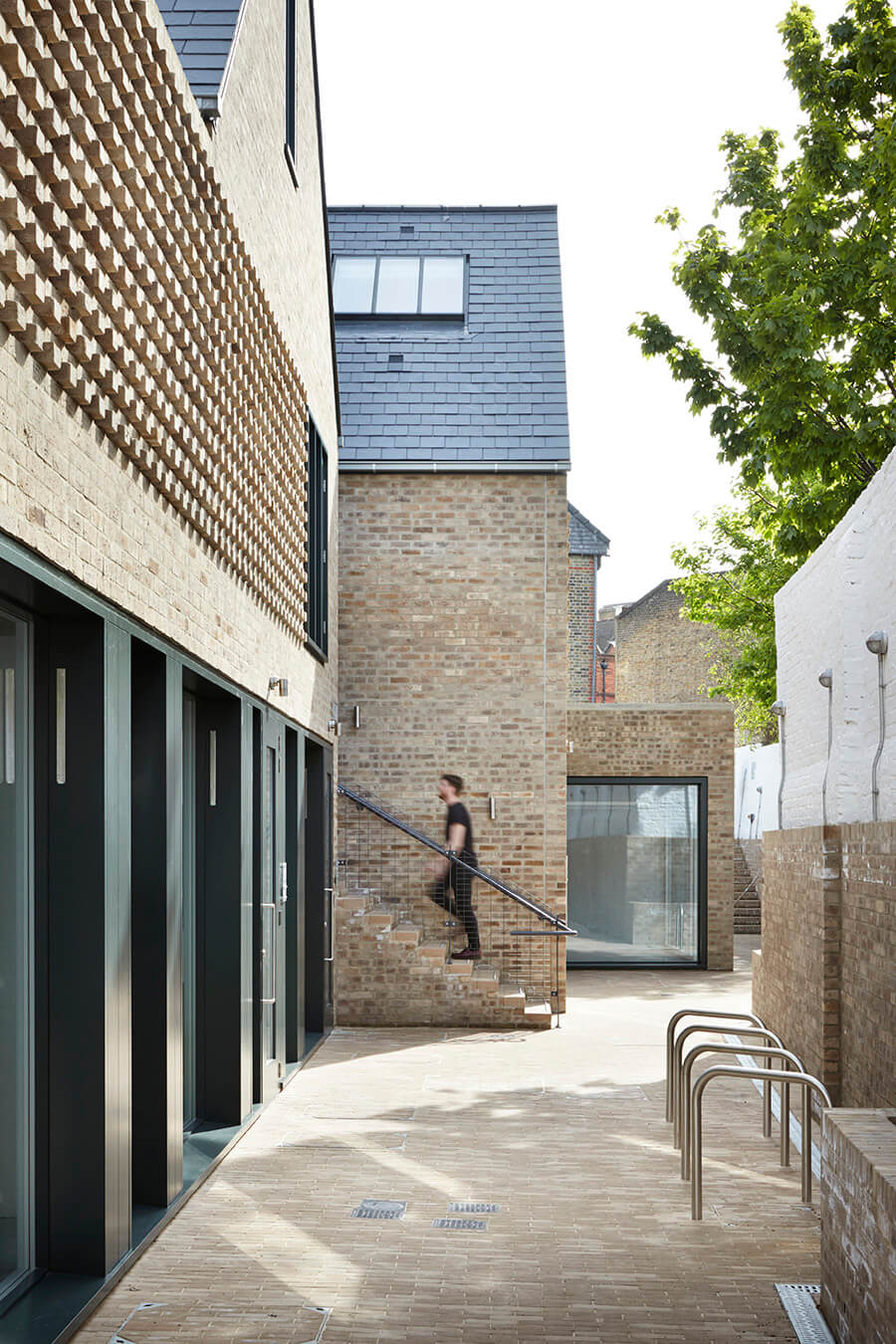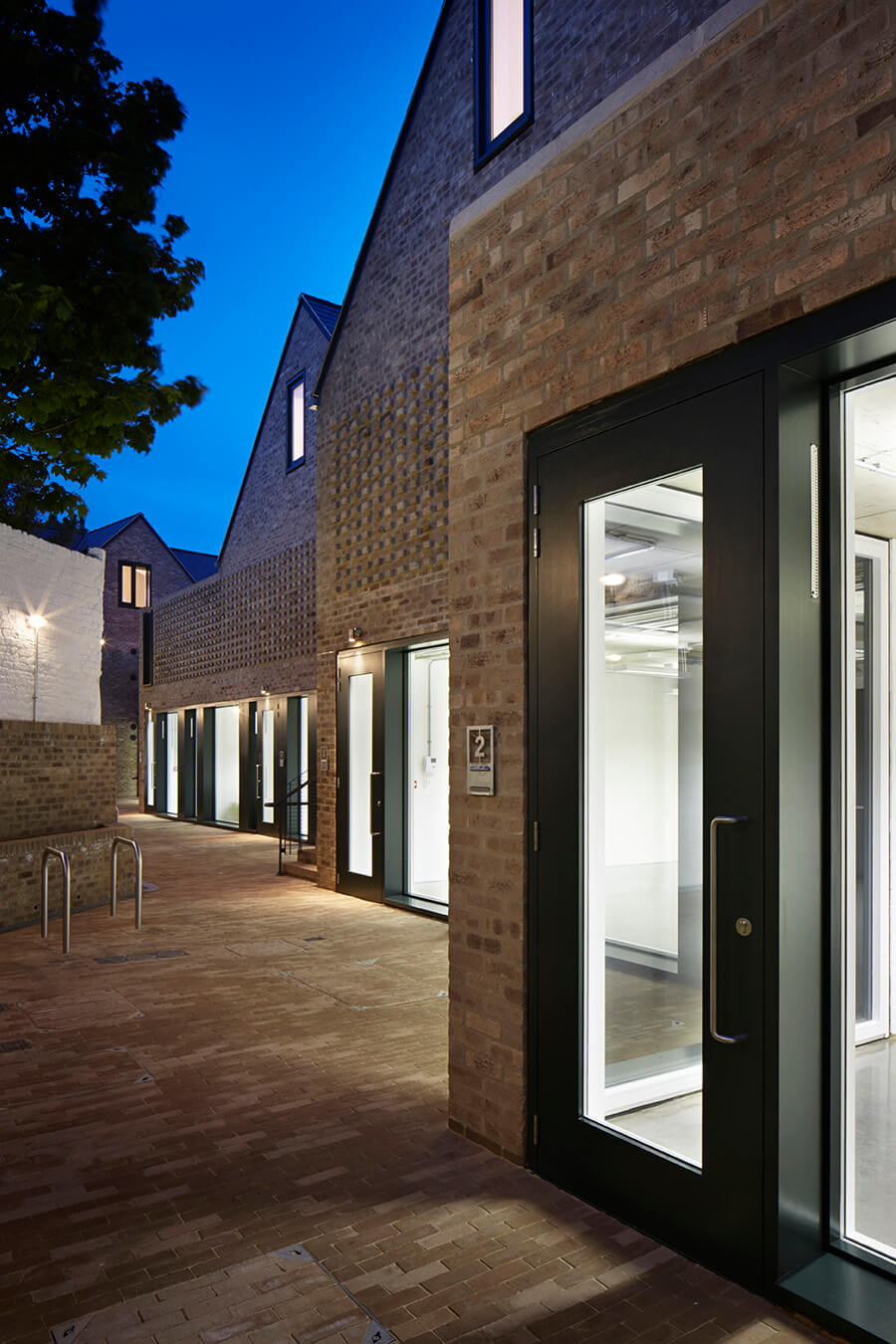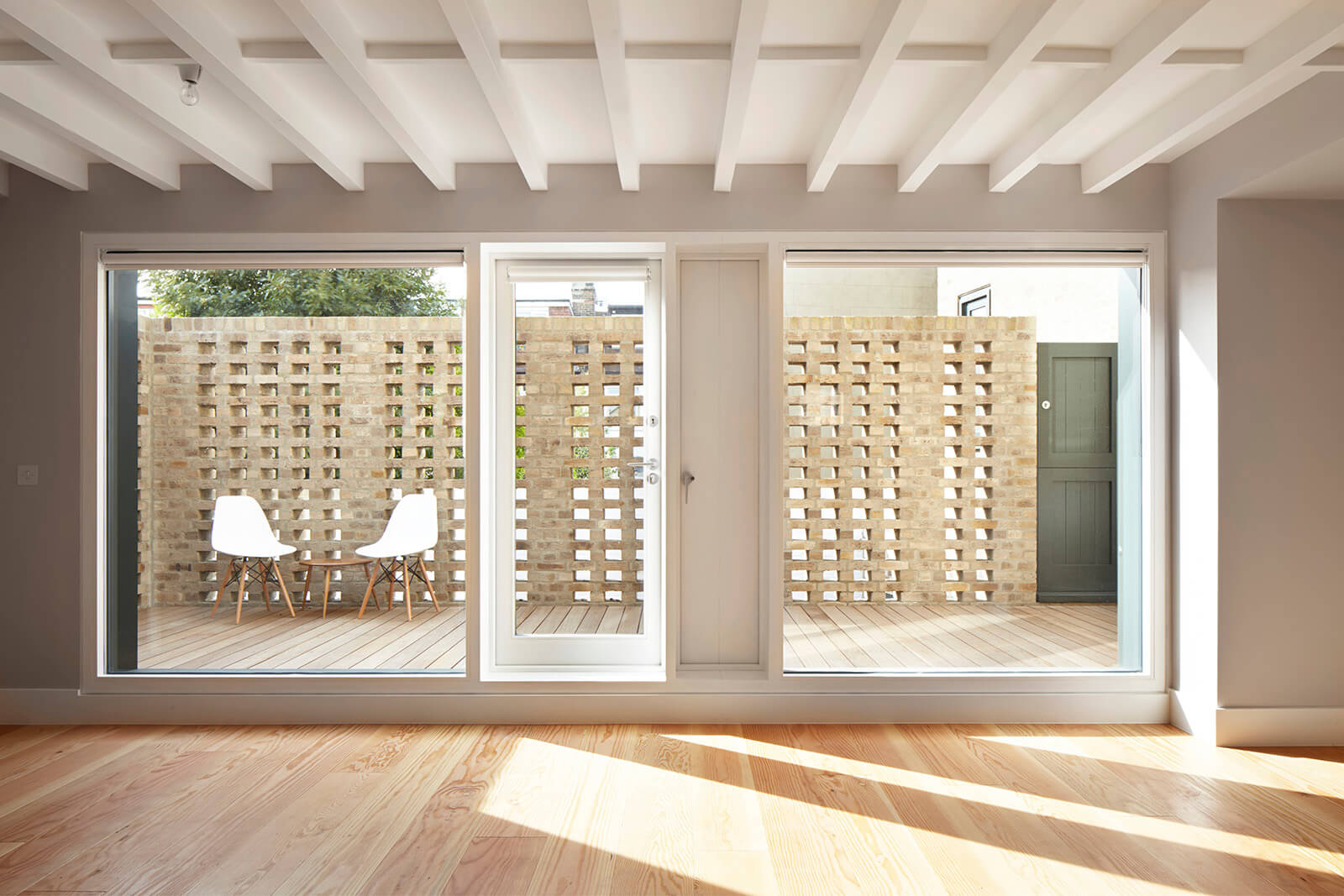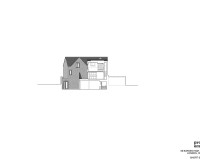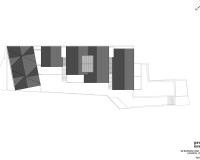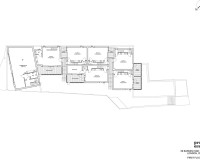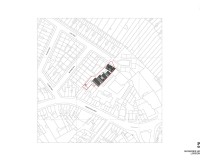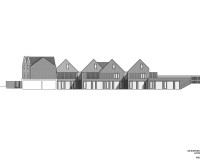Foundry Mews / Project Orange
Foundry Mews / Project Orange
Description
Foundry Mews is a surreptitious new-build, mixed-used development on an 800sqm backland site in Barnes, West London. Tucked away behind a traditional range of shop buildings fronting Barnes High Street, the site was a long abandoned dilapidated MOT and car body repair workshop. The brief for this sensitive site was to create studios and housing. We chose to take the model of the artisan mews where studios and living space share an intimate courtyard setting. The linked gabled buildings use vernacular forms reminiscent of small-scale workshops. The scheme comprises six duplex dwellings above a plinth of studio workspaces with two additional units and an apartment in the gabled northern block. While the brick gables and slate roofs merge into the surrounding street-scape, contemporary screens formed within the brickwork gables shield terraces of the apartments. This unassuming addition to the neighbourhood is an essay in placemaking and offers a thoughtfully re-worked typology for so called 'difficult’ sites.
Design
The main design concept is the notion of a courtyard running the length of the site allowing ground floor access to the commercial units as well as a communal area for resident’s use. Two external stairs tucked between the blocks provide access up to the residential units emphasising the ‘workshop’ character of the scheme. The duplex apartments are arranged with the living space on the lower floor and bedroom and bathroom tucked into the sloped ceiling above.
Sensitive Use of Brick
Wienerberger Eastfield Grey brick is the predominant material, sympathetic to the local stock brick and referencing the site’s industrial past. The detailing – flush mortar joints, recessed bargeboards – is contemporary and bespoke timber fenestration, painted dark green externally, provides a visual counterpoint. Wienerberger Hague Cream DF pavers were selected to create uniformity with the brickwork which is especially apparent where the external stairs cut into the building. At first floor level the brickwork forms the perforated brick screens – an inventive response to planning concerns which developed into a key feature of the scheme – with projecting header banding accentuating the materiality and adding texture. The sense of heritage is apparent in the large window assemblies to the commercial units on the ground floor, metal grating balustrades, and continues inside with the commercial units – exposed concrete soffits, polished concrete floors and painted brickwork walls creating visual interest – and residential apartments with exposed painted timber joists in the main living spaces.
Sustainable Construction
Due to extremely limited site access, all materials for the development had to be carried in by hand. This led to designing a concrete slab and columns for the ground and first floors with the residential upper floors being brick and blockwork with timber joists and studwork. Deliberately the materials are exposed where possible allowing this composite construction to add to the character of the scheme. Sustainable design features were integrated into the project including a green flat roof, photovoltaic cells flush with the pitched roofs, mechanical ventilation heat recovery units in the flats and a centralised gas heating system.
Extra Info
| Client: | Marston Properties 1 Mills Yard Hugon Road Fulham, London SW6 3AQ |
| ARCHITECT: | Project Orange Cosmopolitan House 10A Christina Street,
London EC2A 4PA Contact: Christopher Ash This email address is being protected from spambots. You need JavaScript enabled to view it. 020 7739 3035 |
| MAIN CONTRACTOR: | Charter Construction 1-9 St Anns Road Harrow Middlesex HA1 1LQ |
| PROJECT MANAGER & QUANTITY SURVEYOR: | PHWarr 9th Floor The Tower Building 11 York Road, London SE1 7NX |
| STRUCTURAL ENGINEER: | Barnard & Associates 18 Northfields Prospect Northfields, London SW18 1PE |
| SUSTAINABILITY CONSULTANT: | Envision 25 Manchester Square London W1U 3PY |
| Date completed: | May 2016 |



